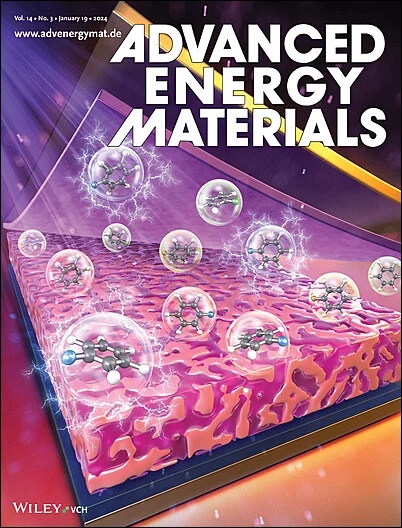Advancements in Electrolytes: From Liquid to Solid for Low‐Cost and High‐Energy‐Density Micro‐Sized Silicon‐Based Batteries
IF 26
1区 材料科学
Q1 CHEMISTRY, PHYSICAL
引用次数: 0
Abstract
Silicon has emerged as a pivotal candidate for next‐generation high‐energy‐density lithium‐ion batteries (LIBs) due to high specific capacity (3579 mAh·g⁻电解质的进展:从液体到固体用于低成本和高能量密度的微型硅基电池
硅已成为下一代高能量密度锂离子电池(lib)的关键候选者,因为它具有高比容量(3579 mAh·g⁻1)、天然丰度和成本效益。与纳米硅相比,由于体积膨胀更严重,微尺寸硅(µSi)阳极一直面临着巨大的挑战。然而,由于优越的丝锥密度和较低的生产成本,μ Si最近重新获得了大量的研究关注。电解质是缓解体积膨胀和稳定电极-电解质界面的关键,因此它们的定制设计对于解决从液体到固态系统的μ Si阳极的固有挑战是必不可少的。这篇综述首先研究了µSi阳极及其相应电解质面临的内在挑战,提出了有针对性的设计原则。随后,全面总结了微硅阳极系统中从液体到全固态电解质的最新进展和优化策略。与液体电解质相比,固态电解质的研究仍然有限,面临着更明显的挑战。最后,对不同微硅阳极电解质体系的发展前景进行了批判性讨论,概述了持续存在的挑战并提出了综合对策。这篇综述为加速高能量密度锂离子电池中微Si阳极的商业化提供了有见地的观点,同时也为推进其他微尺寸阳极材料系统提供了有价值的参考。
本文章由计算机程序翻译,如有差异,请以英文原文为准。
求助全文
约1分钟内获得全文
求助全文
来源期刊

Advanced Energy Materials
CHEMISTRY, PHYSICAL-ENERGY & FUELS
CiteScore
41.90
自引率
4.00%
发文量
889
审稿时长
1.4 months
期刊介绍:
Established in 2011, Advanced Energy Materials is an international, interdisciplinary, English-language journal that focuses on materials used in energy harvesting, conversion, and storage. It is regarded as a top-quality journal alongside Advanced Materials, Advanced Functional Materials, and Small.
With a 2022 Impact Factor of 27.8, Advanced Energy Materials is considered a prime source for the best energy-related research. The journal covers a wide range of topics in energy-related research, including organic and inorganic photovoltaics, batteries and supercapacitors, fuel cells, hydrogen generation and storage, thermoelectrics, water splitting and photocatalysis, solar fuels and thermosolar power, magnetocalorics, and piezoelectronics.
The readership of Advanced Energy Materials includes materials scientists, chemists, physicists, and engineers in both academia and industry. The journal is indexed in various databases and collections, such as Advanced Technologies & Aerospace Database, FIZ Karlsruhe, INSPEC (IET), Science Citation Index Expanded, Technology Collection, and Web of Science, among others.
 求助内容:
求助内容: 应助结果提醒方式:
应助结果提醒方式:


